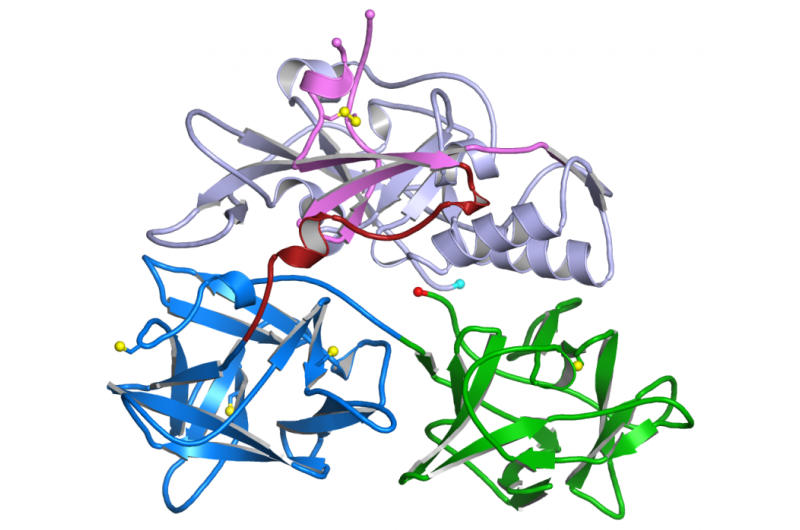Study determines structure of toxin in respiratory infections

Researchers from the School of Medicine at The University of Texas Health Science Center at San Antonio today revealed the molecular structure of the cytotoxin from Mycoplasma pneumoniae, a widespread, highly contagious bacterium that infects the lungs.
The determination of the structure of the protein, called Community Acquired Respiratory Distress Syndrome (CARDS) toxin, will facilitate drug and vaccine development in asthma and other airway diseases, two members of the research team said. According to the U.S. Centers for Disease Control and Prevention (CDC), 2 million new cases of Mycoplasma pneumoniae infections occur each year in the U.S., but the true extent of the health problem is not known and is probably underestimated.
The finding is in this week's Proceedings of the National Academy of Sciences (PNAS). "We know a lot about how the toxin works, but we did not have its 3-D structure," said corresponding author Joel B. Baseman, Ph.D., professor of microbiology and immunology and director of the Center for Airway Inflammation Research at the UT Health Science Center San Antonio. "The structure shows us the molecular architecture of the protein, which permits the rational design of effective drugs and vaccines to neutralize the injurious effects of CARDS toxin."
"The importance of the structure is that it gives us a detailed picture of the protein machine that causes the damage in the lungs linked to asthma and adult respiratory distress syndrome (ARDS)," said lead author P. John Hart, Ph.D. professor of biochemistry and director of the X-ray Crystallography Core Laboratory at the UT Health Science Center.
Mycoplasmas are the smallest of all bacteria and have proven very difficult to study. Dr. Baseman's laboratory discovered the CARDS Toxin in 2006, a finding that was called, at the time, one of the most important in the field since the discovery of the classical toxins of cholera, diphtheria and pertussis. The latter, pertussis toxin, is the agent that causes whooping cough.
The CARDS toxin structure is unique, said Dr. Hart, who occupies the Ewing Halsell-President's Council Distinguished Chair in Biochemistry at the Health Science Center. "In comparison to cholera and pertussis toxins, which have similar action and molecular architectures, the overall organization of CARDS toxin is completely different," Dr. Hart said.
Mycoplasma pneumoniae is spread by sneezing, coughing, talking and touching hands to the nose. It is thought to be responsible for millions of cases of child and adult asthma. This bacterium infects and colonizes the lungs and secretes the CARDS toxin, resulting in extensive airway injury accompanied by fever, excessive mucus secretion, wheezing and hyper-inflammation. Blocking the toxin could prove to be a major advance in the prevention and care of a wide range of acute and chronic airway diseases, Dr. Baseman said.
More information: Structure of CARDS toxin, a unique ADP-ribosylating and vacuolating cytotoxin from Mycoplasma pneumoniae, www.pnas.org/cgi/doi/10.1073/pnas.1420308112
Journal information: Proceedings of the National Academy of Sciences

















